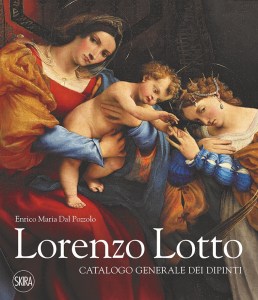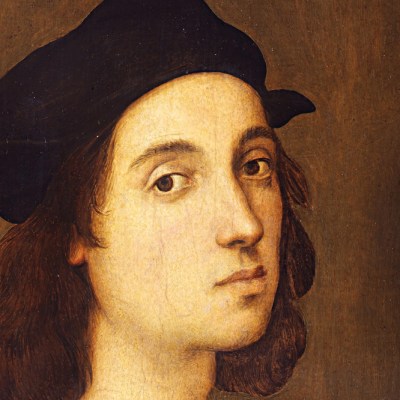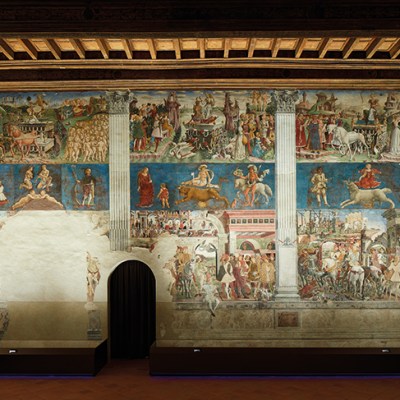From the November 2022 issue of Apollo. Preview and subscribe here.
Lorenzo Lotto (c. 1480–1556/57) is almost unique among Renaissance masters in only seeming to grow more modern with the passage of time. In 1895, when Bernard Berenson published the original edition of his mono- graph on the artist, he was directing a spotlight on to a distinctly undervalued figure, but in the intervening years Lotto has increasingly taken centre stage in our understanding of the art of 16th-century Italy. In consequence, a positive flood of exhibitions and publications now runs the risk of overwhelming all but his most tireless admirers.
Paradoxically, however, the attempts to produce full-dress catalogues of his oeuvre have been few in number. The first real qualifiers were two books both published in 1953, in a virtual dead heat with the great Lotto exhibition of that year at the Doge’s Palace in Venice; the first by Luigi Coletti and the second by the double act of Anna Banti and Antonio Boschetto. Berenson’s Essay of 1895 had been just that, but 60 years after it was first published, a new edition with a catalogue finally saw the light of day.
These three monographs from the 1950s were followed, in 1975, by another two: one was the volume devoted to Lotto in Rizzoli’s Classici dell’arte series, with a short but important introduction by Rodolfo Pallucchini and – given the format – an inevitably telegraphic catalogue section by Giordana Mariani Canova. The other was Flavio Caroli’s Lorenzo Lotto. Its second edition, Lorenzo Lotto e la nascita della psicologia moderna, included a catalogue section which was remarkably similar to Mariani Canova’s. Five years later, happily, its second edition included an enlarged and updated catalogue section by Marinella Pigozzi and there followed a long silence on the catalogue front.

Nearly half a century on, it is more than time for a fresh approach and Enrico Maria Dal Pozzolo here demonstrates that he is absolutely the right man for the job. The format of the main catalogue section of 163 entries (occasionally including more than one painting) is straightforward, with each double-page spread as a rule offering text and comparative illustrations of various kinds on the left, and a full-page colour reproduction on the right. Only when it comes to more ambitious projects, such as the frescoes of the Oratorio Suardi at Trescore, is this formula departed from – in that case yielding two pages of text and no fewer than 10 pages of images.
The text itself is divided between unusually full header material – comprising basic information as to title, date, dimensions, inscriptions, and location, followed by some or all of categories such as provenance, exhibition history, restorations, diagnostic history (X-rays and the like), preparatory drawings, copies, and bibliography – and a more discursive analysis of the work in question. It is followed by sections devoted to 15 borderline cases (‘dipinti dubbi’), 16 paintings from the workshop or immediate circle, 15 copies of lost originals, a substantial 153 rejected attributions, and an even mightier 263 lost or unidentified works.
Almost all the material one could hope to find is combined with Dal Pozzolo’s account of the relevant painting. The sole missing element, albeit in only a few instances, is the absence of information concerning the number and arrangement of the panels that make up the painting, above all when it comes to altarpieces. The reason why this is of interest is that Venetian artists tended to align their panels horizontally, whereas artists in the rest of Italy tended to align their panels vertically. Having said that, in Lotto’s early masterpiece, the Santa Cristina Altarpiece (1504–06) in Tiverone, the panels of the virtually square main field are vertical, and only those of the lunette above are horizontal, almost inevitably given its wide, low format. It should be added that silence on this matter is all but universal.
Turning to the actual content of the entries, which have to be read in conjunction with the introduction, it is striking just how often Dal Pozzolo manages to go beyond the standard accounts, while at the same time being exceptionally generous towards his precursors, whom he often quotes. A perfect example of this combination of learning from past scholarship and then surpassing it is to be found in the entry on the Madonna in Glory with Saints Anthony Abbot and Louis of Toulouse of 1506 in Asolo. After citing Augusto Gentili’s suggestion that the face of the Virgin must be a portrait likeness, he convincingly proposes that the model must have been the former Queen of Cyprus, Caterina Cornaro (1454–1510), who had been a resident of Asolo since 1489, and goes on to point out that the tree in the middle distance beneath her feet is an artfully punning cypress.
At the same time, and almost more crucially, every page is imprinted with Dal Pozzolo’s visual understanding. Nothing could be further from the truth than the notion that one has only to look at pictures, because in fact one has to learn to see them. In these terms, the author’s highly detailed description of Lotto’s Entombment of 1512 at Jesi is a model. It is one instance among many of his capacity to recognise sources for Lotto’s inventions in earlier works of art, on occasion stretching all the way back to classical antiquity. What is more, Dal Pozzolo writes with enviable clarity, and is not afraid – as all too many are these days – to express his opinions about artistic quality.
It is a considerable bonus that, in addition to its heavyweight scholarly virtues, when it wants to, this catalogue displays a sense of fun. On page 58 of the introduction, for instance, Andrea Odoni – the subject of one of Lotto’s greatest portraits (in the Royal Collection at Hampton Court) is described as a species of Pavarotti avant la lettre.

Lorenzo Lotto: Catalogo generale dei dipinti by Enrico Maria Dal Pozzo is published by Skira.
From the November 2022 issue of Apollo. Preview and subscribe here.



